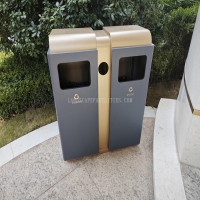Welcome to the website for landscape facilities products and knowledge.
What is the bin’s carbon footprint, considering materials and manufacturing processes?
The carbon footprint of a bin depends heavily on the materials used and the manufacturing processes involved. Traditional plastic bins, often made from petroleum-based polymers, contribute significantly to greenhouse gas emissions during production. The extraction of raw materials, energy-intensive manufacturing, and transportation all add to their environmental impact.
Alternatively, bins made from recycled materials or sustainable alternatives like bamboo, stainless steel, or biodegradable composites have a lower carbon footprint. These options reduce reliance on fossil fuels and often require less energy to produce. Manufacturing processes that prioritize energy efficiency and renewable resources further minimize emissions.
Recycling bins, while promoting sustainability, also have their own footprint. However, their long-term benefits in waste diversion and resource recovery often outweigh initial manufacturing emissions. To truly reduce a bin’s carbon footprint, manufacturers and consumers should prioritize durable, recyclable, and locally sourced materials while supporting circular economy practices.
By understanding these factors, individuals and businesses can make informed choices to minimize their environmental impact when selecting waste management solutions.
Related search:

Recommendation
Double-bucket garbage bin, outdoor, metal, multi-color, powder-coated, double-bucket trash can